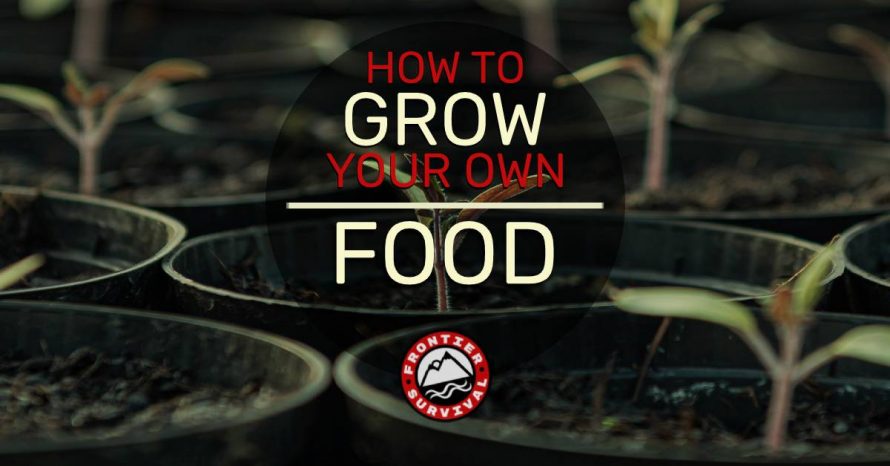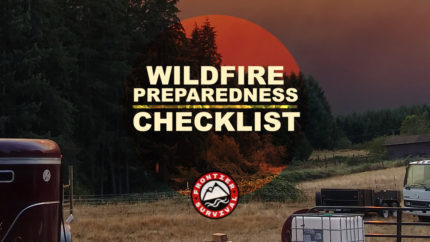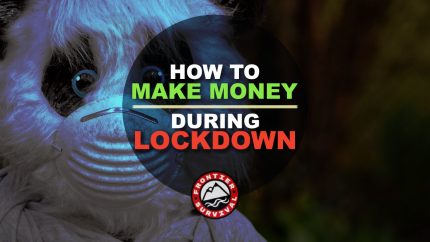Understanding how to start a survival garden is more important than ever now with unemployment off the charts, stymied supply lines caused by pandemic panic, and the world teetering on the verge of a total economic collapse in 2020.
At this point everyone finally understands the importance of putting aside a backup supply of food to get through an emergency.
However, if the emergency lasts longer than expected then you will need another way to take care of you family’s food needs once your backup food supply runs out.
The best way to do that is by building a survival garden now to start producing your own food supply.
Not only is growing your own food in a survival garden a great way to stretch your budget, but it will also provide your family with healthier and tastier produce than you are probably used to.
The best part is that literally ANYBODY can build a survival garden with whatever space they have access to.
Survival Garden Basics
You don’t need to have a lot of space to plant and harvest a lot of food.
You can start a garden no matter where you live – even if you’re a city dweller living in a tiny apartment.
Container & Indoor Survival Gardening
If you live somewhere space is limited, you can easily build your survival garden using pots and containers.
If you don’t have access to commercial potting soil then you can dig up and collect some native soil locally in your area.
Try to only collect soil from areas away from human activity if possible, and be sure to leave the area how you found it.
PRO TIP – Mole and gopher mounds are an excellent resource for collecting soil for your survival garden. Not only has the animal done all the digging for you, but the soil will basically be free of weed seeds.
You need to make sure your container garden gets plenty of sunlight, and you will need to be able to water it regularly.
If your only space to grow is indoors then just make sure to keep your survival garden plants near a window that gets good natural light.
You will also need a way to add fertilizer and nutrients to your soil over time.
Making your own compost with garden and kitchen waste can be a great way to produce your own plant food.
By the way, did you know that your urine also makes a fantastic fertilizer for your plants?
That’s right…your pee is good for your plants.
So quit flushing that valuable resource down the toilet, and start bottling it up!
Just be sure to dilute it water before feeding to your plants, and try not to let it splash any fruits or leafy greens because…gross.
Outdoor Survival Gardening
If you do have access to land where you can have your survival garden, then you need to choose the location wisely.
After all, plants need to have adequate sunlight in order to survive, and the soil needs to be good for growing in.
For instance, very few plants will thrive in hard, rocky soils.
Things to Consider in Your Outdoor Survival Garden:
Drainage
Having good drainage is really important.
You need to ensure the area where you’re going to plant your garden isn’t in an area that holds standing water in heavy rainfall, or it could drown your plants.
Zone
Check out the “hardiness zone” for your area.
This will inform you on what kinds of plants will grow best in your area.
Position
Positioning of your crops is important too.
Make sure any plants you choose to grow next to each other can be good neighbors.
The different plants that you grow need to be placed in conjunction with their compatibility with any nearby plants.
This is because certain types plants can actually make it difficult for other types of plants to survive.
Get Heirloom Varieties
The types of seeds or starter plants you get is important.
For a survival garden you want to stick solely with heirloom varieties.
Most other varieties, even certified organic, are hybrids which means they won’t reproduce “true to type”.
In other words, the offspring probably won’t have the same characteristics as the parent plants.
Seeds collected from heirloom varieties will share the same characteristics of the parent plant (as long as it was pollinated by the same variety).
On a side note, you can experiment with your own hybrid varieties by pollinating one type of heirloom variety with a different type!
Rows vs Raised Beds
Most people plant their gardens in one of two main ways: rows or raised beds.
As with anything there are pros and cons for each method.
One big advantage of rows is that you don’t have to build any raised beds!
So why choose raised beds then?
Well, there are lot of reasons, but most of them boil down to having more control over different factors in your survival garden.
Raised beds can also make it easier to gather your food when it’s time to harvest.
Plus, if there are problems in one raised bed you can isolate it, so it won’t wipe out your entire survival garden.
Start Your Survival Garden Now
Don’t put it off any longer.
Starting your survival garden will be one of the best things you ever did for your family…
It might just save their lives.



